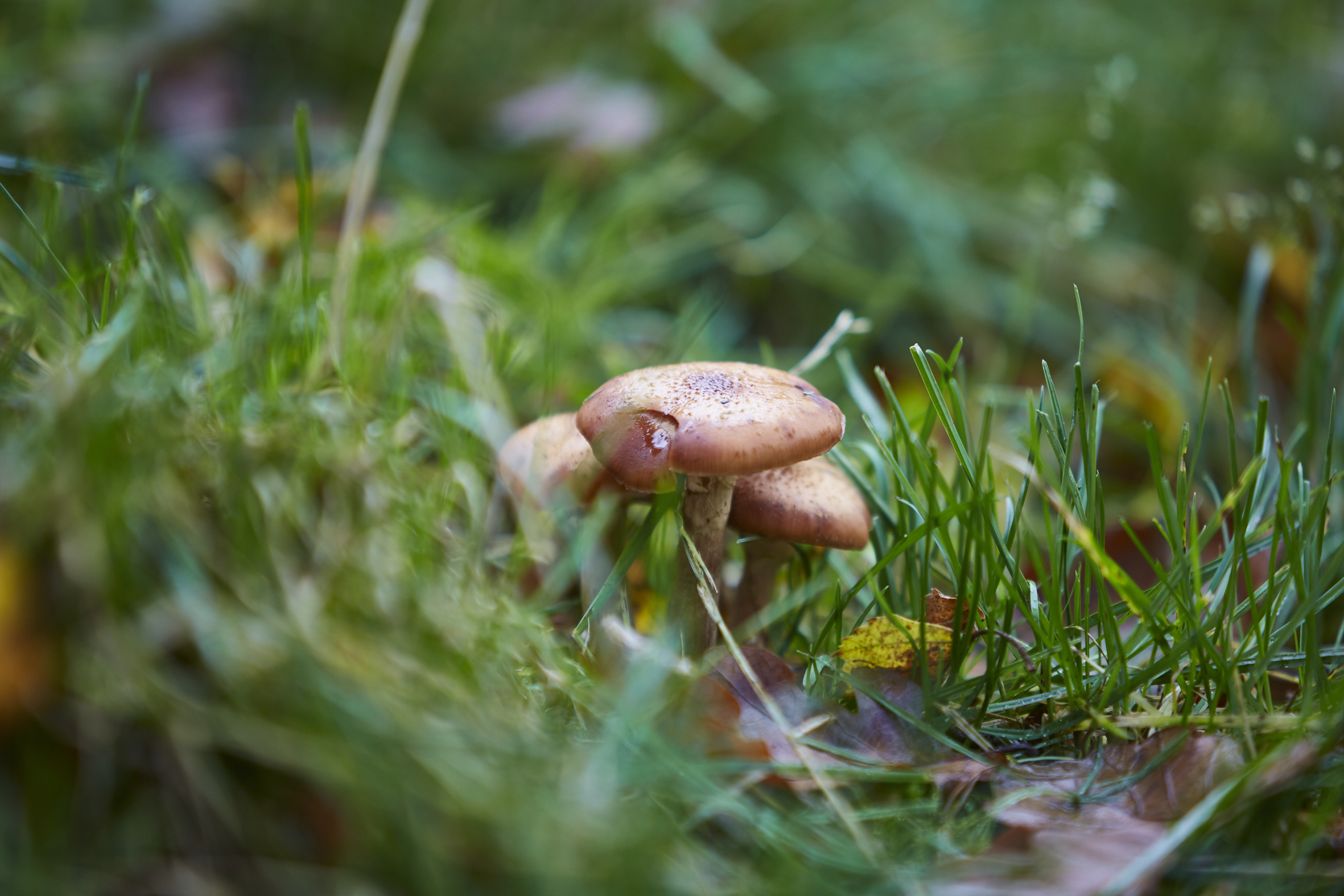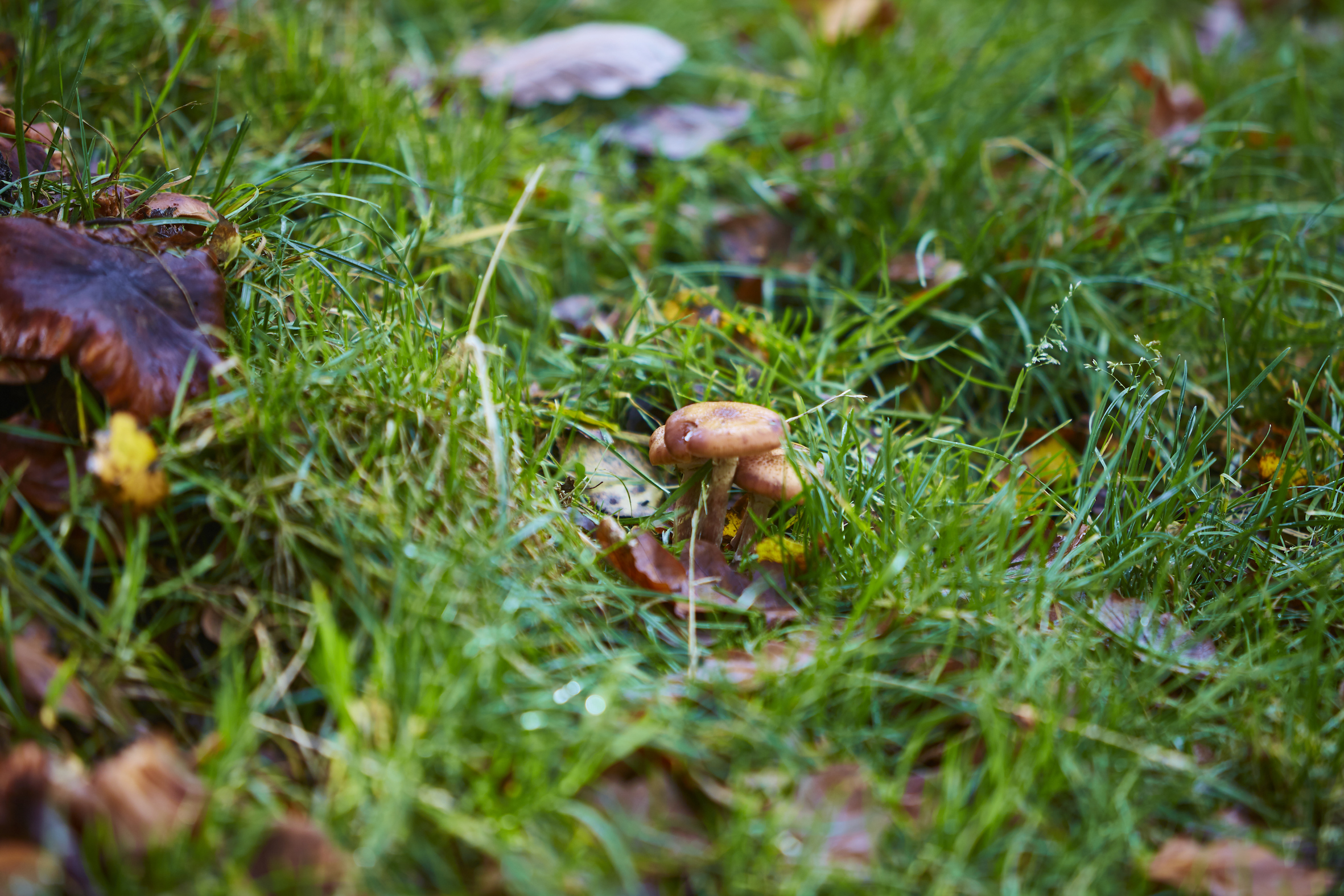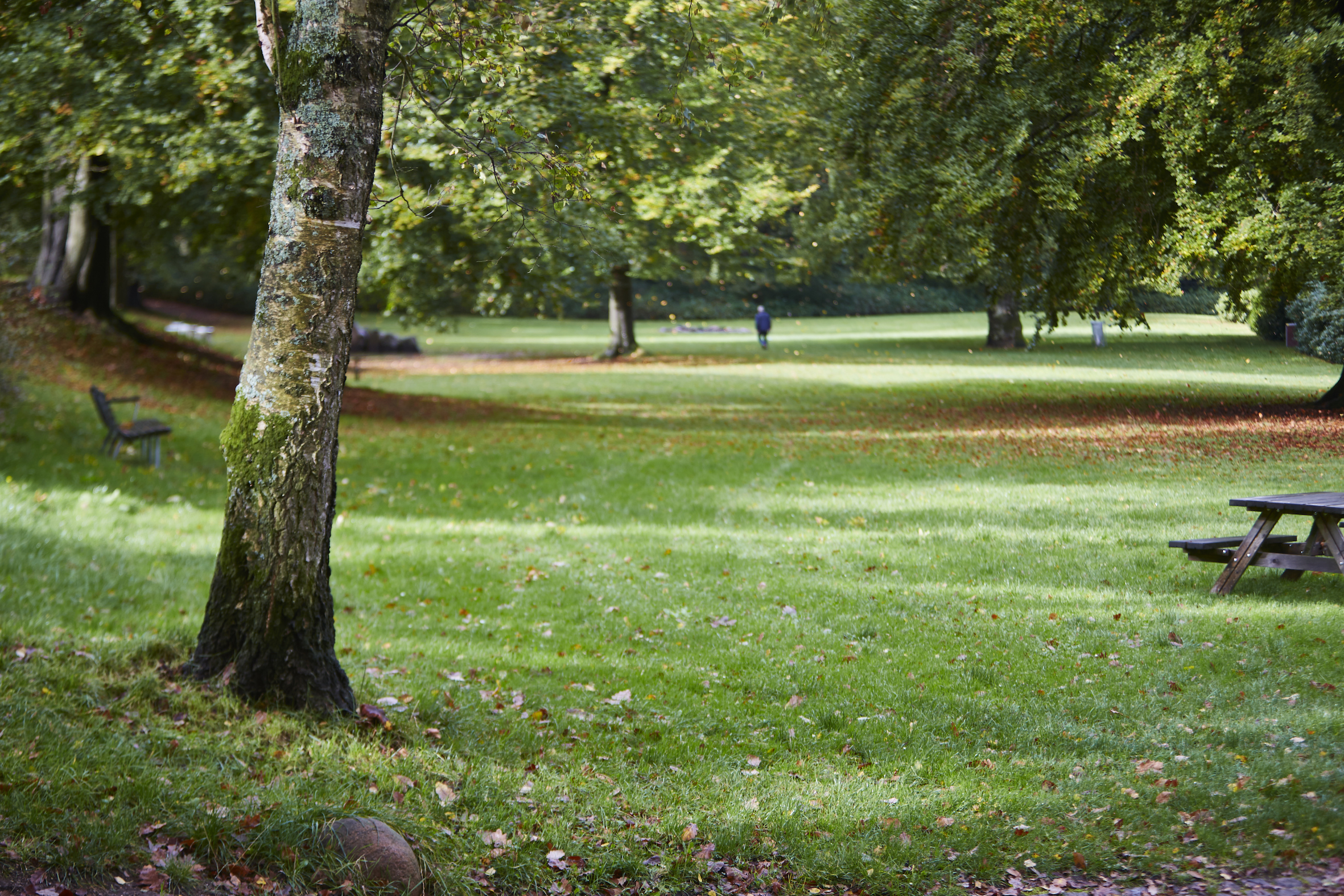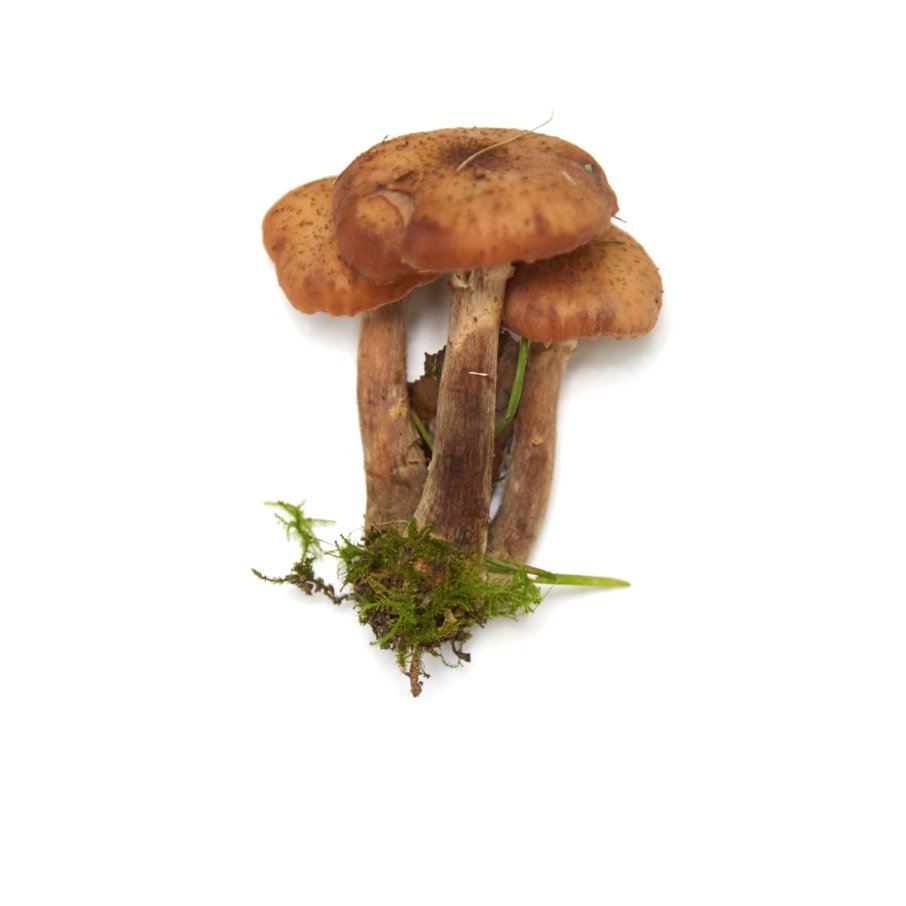



Honey fungus
Honey fungus is the largest living organism on Earth. It can cover massive areas and live to be up to 1500 years old. Honey fungus is actually a collective name for a handful of different mushrooms that are all visually striking and edible when cooked properly.
-
Where to Find It
Honey fungus lives off of trees, causing them to decompose as it grows inside of them. The mushrooms emerge once the tree has died, so look in old, dead tree stumps for the large, interconnected bunches of the fungus. A recently cut forest will create very good conditions for honey fungus for several years, but it can also be found growing at the foot of living trees—especially hardwoods. Though it looks like its growing directly on the ground, the fungus has actually taken hold in the roots of the tree, or in underground parts that are decaying.
Deciduous forests, coniferous forests, towns.
-
When to Find It
You'll normally find honey fungus from September until October, but the "dark honey fungus" variety can easily extend its season if the weather conditions are favorable.
Entire mushroom: September, October.
-
How to Spot It
"Real" honey fungus is generally a pretty, honey color—hence the name, which has been passed on to other honey fungi with different characteristics. They all share a distinctive ring on their stem and a brownish or olive-yellow cap, darkest in the center and often with distinct, loose scales that are concentrated in the middle of the mushroom. It grows up to 15 cm tall, with a cap between 5 and 10 cm in diameter.
-
How to Pick It
You can pick the very small, fresh honey fungi whole. It's best to choose the caps of larger specimens, but you can also use their stems if they look tasty. If the cap breaks off crisply when you twist it, it’s good for eating.
Risk of misidentifying the plant
Honey fungus can be confused with the shaggy scalycap and other inedible scalycaps that are recognizable by slimy or scaly caps that are attached much more firmly than those of the honey fungus.


